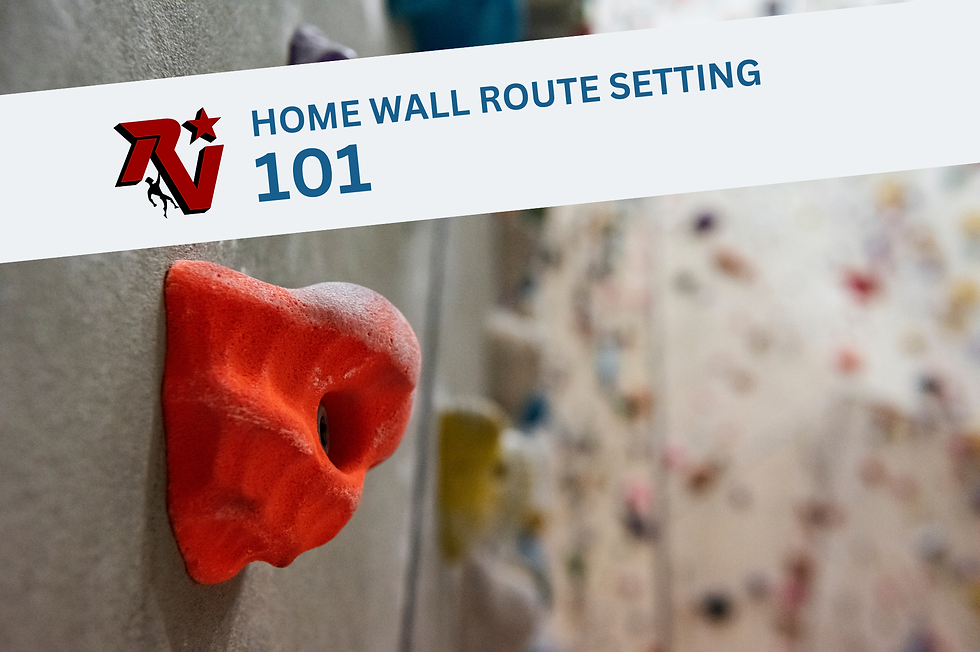Want to Become a Better Climber? Here's the Real Deal…
- Dovi Hirsch
- Feb 10, 2021
- 3 min read
by Christopher Schafenacker

One of climbing’s basic rules is that routes have grades and the harder they are, the better a climber you need to be to climb them. The standard grading metric used in North America is the Yosemite Decimal System (YDS) which classifies rock climbs as fifth class and divides their difficulty into decimals ranging from 5.0 to 5.15 (and counting). It is a neat and tidy, if not inelegant system that invests climbing with a sort of video game logic which makes ticking new grades feel like leveling up. And for this precise reason, the YDS is deceptive. Why? Because unlike in most games, advancing in level does not itself mean you are getting better, especially if as soon as you bag your first five point whatever you immediately start gunning for five point whatever plus one.
Think of it like this: sending a single 5.13 is like mastering the moves to Michael Jackson’s “Thriller.” Pretty badass, sure, but not enough to make you the king of rock. Master every single one of MJ’s dance breaks—or, to roll with this metaphor, climb every single 5.13 out there—on the other hand and yeah, you get a crown (and a single white glove). The problem with the YDS, after all, is that it lacks nuance.
Getting truly good at climbing means mastering the sport’s many styles. Even if you’re only ever interested in sport climbing—and never plan to branch out to trad, bouldering or big wall ascents—you need to be able to tippy-toe up slab as much as huck through roofs if you want to consistently bag hard lines or enjoy the activity in all its diversity. You’ll never pull through the steep jugs of Farley Ledge’s iconic “Hard as an Oosik” (5.12a), for instance, if you can’t cruise the slopey face below.
The best way to build a well-rounded skill set is, of course, to get on as many lines at as many different climbing areas as possible. Sending 5.11 on limestone, sandstone, and granite is much harder—and way radder—than bagging a single 5.12 at your local crag, after all.
However, none of us should be touring around the country crushing the gnar at the Red, Red Rocks, and Rifle right now. Indeed, unless you live within walking distance of a crag, you probably shouldn’t even be getting after the local test pieces of your region. Luckily, training a diversity of skills is possible with even just a modest home setup.
Get Well-Rounded the Homegrown Way
Of course, no personal pain cave is a substitute for travelling to top spots around the country, and, yet, with a little creativity and a densely-set home climbing wall, you can balance your mastery of crimps, slopers, pockets and pinches, preparing you to crush at any area as soon as travel comes back online.
Simply setting a diversity of holds and movement styles on a spray wall is a great way to force variety into your movement repertoire. All too often, though, amateur setters can’t help but design problems that play to their strengths or follow a single theme. The solution used to be luring your crew over for a setting party with pizza and beer, but Covid-19 has kiboshed such events. An alternative is to bolt on all the holds you own and upload your wall to an app like Stōkt where friends can set new problems from afar, forcing you to climb outside your comfort zone without ever even having to go outside.
Of course, suffering the sort of semi house arrest we’ve all endured this past year is nothing to get stoked about…but being able to continue training the range of skills that signal true improvement is. Unless you’re performing at an elite level, the best way to get better at climbing is simply to climb as much and as diversely as possible. After all, as important as sport-specific tools like the hangboard and campus board may be, all the power or finger strength in the world won’t solidify you at a certain grade. Climbing that grade in all of its iterations, however, will.
Featured Climbing Training Gear
*NEW* The Rocketeer Wall: our free-standing adjustable solution for those who can’t mount a hangboard anywhere in their home or apartment—or who are limited on space. The Rocketeer gives climbers the additional option to set specific climbing holds. Recreate the crux holds of your proj and get ready to send, bruh.
The Rocket Wall: Available in 6’ and 8’ widths, it’s been tough for us to keep up with the demand for this innovative home climbing wall solution. Slightly overhanging, the Rocket Wall is big enough to set routes on, or to build a systems board.
The Rock-Stah: Our handcrafted version of a traditional hangboard, with curving crimp rails to help alleviate unnecessary strain on your pulleys. Because ain’t no one got time for a finger injury…










Comments